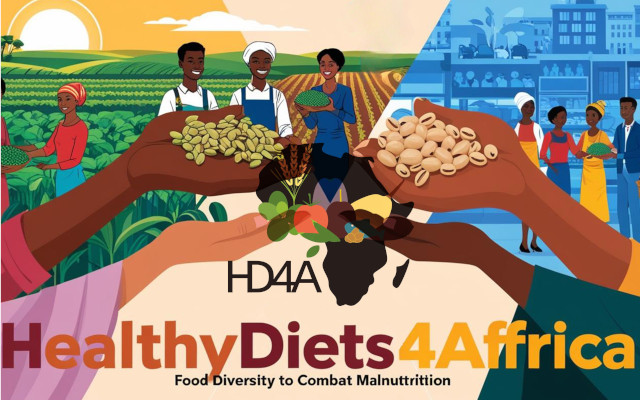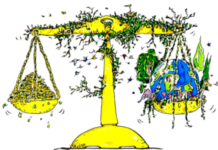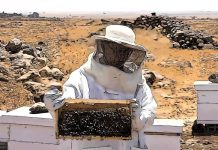Africa faces a critical triple burden of malnutrition – hunger, micronutrient deficiencies, and obesity – demanding innovative and sustainable solutions. This article highlights the HealthyDiets4Africa (HD4A) initiative, funded under Horizon Europe, as a compelling example of such an approach.
By championing food diversity and the reintroduction of underutilised, climate-resilient crops, HD4A offers a tangible strategy to improve nutrition, enhance environmental sustainability, and ultimately pave the way for healthier futures across the continent.
This piece will explore the key aspects of HD4A, demonstrating its potential to transform African agriculture and combat malnutrition through a multifaceted and culturally sensitive approach, based on diversity, which includes the whole supply chain and its market dynamics.
1. A childhood inspiration turned global mission
In 1980s Germany, Professor Michael Frei was deeply affected by images of the Ethiopian famine, inspiring his career in agronomy and food security.
Today, as a professor at Justus Liebig University (JLU) Giessen, he leads #HealthyDiets4Africa (2023–2028), a pioneering project uniting African and European experts, including the UN World Food Programme (WFP) and the International Institute of Tropical Agriculture (IITA).
Their mission, and challenge: can diversified food systems fight malnutrition while benefiting the planet?
2. From monoculture to biodiversity: transforming African agriculture
Africa’s food systems remain dominated by maize monocultures – high-yielding but nutrient-poor. To counter this, HD4A has established ‘Food System Labs’ in eight African countries: Benin, Ivory Coast, Nigeria, Ghana, Liberia, Cameroon, Kenya, Uganda.
These labs, coordinated by the Africa Rice Center (Côte d’Ivoire), assess underutilised crops for nutritional value and integration into local diets. ‘A diverse diet is healthier, addresses dietary deficits, and enhances environmental stability’ – Prof. Michael Frei, HD4A Lead.
3. The triple burden of malnutrition in Africa
More than any other continent, Africa faces a complex triple burden of malnutrition (FAO et al., 2024):
- persistent undernutrition. Despite efforts to improve food security, millions of children still suffer from stunting and wasting, limiting their physical and cognitive development. Rural communities, where access to diverse and nutrient-rich foods is limited, are especially vulnerable;
- widespread micronutrient deficiencies. Deficiencies in essential vitamins and minerals – such as iron, vitamin A, and zinc – remain a silent crisis. These deficiencies weaken immune systems, impair cognitive function, and increase maternal and child mortality rates;
- rising diet-related diseases. Urbanization and shifting food systems have led to a surge in obesity, diabetes, and hypertension, driven by the increasing consumption of ultra-processed foods and the decline of traditional, nutrient-rich diets.
Tackling these challenges demands holistic, locally led solutions. Initiatives like HD4A play a key role by promoting indigenous crops, enhancing school feeding programs, and advocating for better nutrition policies, helping to transform Africa’s food systems for a healthier future.
4. Rediscovering Africa’s forgotten crops
HD4A focuses on three underutilised super-crops:
- amaranth (Amaranthus spp.). A drought-resistant pseudo-cereal with high levels of protein and minerals as compared to the commonly utilized cereal grains such as millet, sorghum, rice, wheat and corn (Aderibigbe et al., 2022). Studies also suggest various health benefits associated to amaranth’s intake, also due to its antioxidant action (Vento et al., 2024);
- cowpeas (Vigna unguiculata). A nitrogen-fixing legume that improves soil fertility while providing 23% protein, fibre, and folate (Phillips et al., 2023). Research highlights its potential in reducing child stunting (Stephenson et al., 2017);
- African locust bean (Parkia biglobosa) is an important pulse crop rich in protein, carbohydrates, fibers and micronutrients. It also contain a number of essential amino acids (except cysteine and methionine), and polyphenols with antioxidant activity (Affrifah et al. 2022).
‘We don’t want to return to the Stone Age – just preserve the good things people already had’ – Prof. Michael Frei.
5. Overcoming social and cultural barriers
Improving nutrition isn’t just about access to food – it also requires shifting cultural perceptions and behaviors. Professor Christophe Matthys (KU Leuven) leads HD4A’s behavioral change efforts, addressing key challenges:
- cultural perceptions. In some communities, overeating is seen as a sign of wealth, making balanced eating less desirable;
- food stigma. Fruits and vegetables are sometimes dismissed as ‘food for the poor,’ reducing their consumption;
- processed-food dependence: urbanization has driven a shift toward cheap, unhealthy processed foods, increasing diet-related diseases.
‘We must plant the idea of food diversification in people’s minds’, says Prof. Matthys. Through education and advocacy, HD4A works to reshape attitudes and promote healthier, locally sourced diets.
6. School-based nutrition interventions
In Côte d’Ivoire, HD4A is piloting the production of nutrient-rich rice crackers made from underutilized crops. This innovative approach aims to enhance the nutritional value of school meals while promoting the use of indigenous ingredients that are often overlooked in mainstream food systems.
By integrating these crackers into school feeding programs, HD4A is assessing their acceptance among children and evaluating their potential to improve dietary diversity and combat malnutrition. Dr. Sali Ndindeng of AfricaRice highlights the significance of this initiative, stating, ‘These crackers provide diverse nutrients, combating child malnutrition early’.
This initiative serves as an example of how locally sourced, nutrient-dense foods can be leveraged to address malnutrition in vulnerable populations. If successful, similar approaches could be scaled across other regions, supporting both food security and local agricultural economies.
7. Strengthening the food system through diversity
Diversification enhances food system resilience by improving production, quality, sustainability, health, economy, and governance. It applies across the food chain – spanning farms, supply chains, and consumption – at multiple levels.
HealthyDiets4Africa explores diversification to create healthier diets while delivering economic, social, and environmental benefits. The project focuses on sustainable farming, resilient ecosystems, and diverse business models that support economic growth and balanced nutrition.
Targeting crops and fish (Hervé et al., 2025), it engages stakeholders through interdisciplinary research. Expected outcomes include nutrient-rich crops, diversified production and processing, dietary guidelines, adoption strategies, and innovative food businesses.
8. Global advocacy: HD4A at the 2025 Nutrition for Growth Summit
At the 2025 Nutrition for Growth (N4G) Summit in Paris, the HD4A initiative took center stage in global discussions on food security and nutrition. Representing HD4A, Prof. Matthys delivered a compelling presentation to policymakers, researchers, and development agencies, emphasizing the need to rethink Africa’s role in the global food system.
‘Africa is not just a continent of hunger – it’s a wealth of untapped agricultural potential’, Prof. Matthys stated, challenging common narratives that focus solely on food scarcity rather than the region’s vast biodiversity and agricultural resources. His address highlighted HD4A’s mission to harness underutilized crops and promote sustainable food systems that empower local farmers and communities.
9. The future: diverse, nutritious, and sustainable diets for a healthier Africa – and the world
The HealthyDiets4Africa (HD4A) initiative presents a bold vision for tackling Africa’s complex nutritional challenges. By revitalizing traditional, underutilized crops, integrating indigenous knowledge with modern innovation, and promoting the diversification of entire food systems, from farm to fork.
This comprehensive approach strengthens food production, supply chains, and consumption patterns, fostering resilience, economic growth, and environmental sustainability. By unlocking Africa’s agricultural potential and improving nutrition, HD4A aims to offer a scalable model that can inspire more efforts in the fight against malnutrition.
Dario Dongo
Credit cover: Dario Dongo, Food Times
References
- Dunne, A. (2025). Sowing the seeds of greater food diversity in Africa. Horizon, the EU Research & Innovation Magazine. https://tinyurl.com/bdhyphf8
- FAO, IFAD, UNICEF, WFP, & WHO. (2023). The state of food security and nutrition in the world 2023: Urbanization, agrifood systems transformation and healthy diets across the rural-urban continuum. FAO. https://doi.org/10.4060/cc3017en
- Aderibigbe OR, Ezekiel OO, Owolade SO, Korese JK, Sturm B, Hensel O. (2022). Exploring the potentials of underutilized grain amaranth (Amaranthus spp.) along the value chain for food and nutrition security: A review. Crit Rev Food Sci Nutr. 62(3):656-669. doi: 10.1080/10408398.2020.1825323
- Vento M, Della Croce CM, Bellani L, Tassi EL, Echeverria MC, Giorgetti L. (2024). Effect of sprouting, fermentation and cooking on antioxidant content and total antioxidant activity in quinoa and amaranth. Int J Mol Sci. Oct 12;25(20):10972. doi: 10.3390/ijms252010972
- Stephenson KB, Agapova SE, Divala O, Kaimila Y, Maleta KM, Thakwalakwa C, Ordiz MI, Trehan I, Manary MJ. (2017). Complementary feeding with cowpea reduces growth faltering in rural Malawian infants: a blind, randomized controlled clinical trial. Am J Clin Nutr. Dec;106(6):1500-1507. doi: 10.3945/ajcn.117.160986
- Nwagu, T.N., Ugwuodo, C.J., Onwosi, C.O. et al. (2020). Evaluation of the probiotic attributes of Bacillus strains isolated from traditional fermented African locust bean seeds (Parkia biglobosa), “daddawa”. Ann Microbiol 70, 20. https://doi.org/10.1186/s13213-020-01564-x
- Mekonnen, T.; Gerrano, A.; Mbuma, N.; Labuschagne, M. (2022). Breeding of Vegetable Cowpea for Nutrition and Climate Resilience in Sub-Saharan Africa: Progress, Opportunities, and Challenges. Plants. 11. 24. 10.3390/plants11121583
- Termote C, Odongo NO, Dreyer BS, Guissou B, Parkouda C, Vinceti B. (2022). Nutrient composition of Parkia biglobosa pulp, raw and fermented seeds: a systematic review. Crit Rev Food Sci Nutr. 62(1):119-144. doi: 10.1080/10408398.2020.1813072
- Affrifah, N. S., Phillips, R. D., & Saalia, F. K. (2022). Cowpeas: Nutritional profile, processing methods and products. A review. Legume Science, 4(3), e131. https://doi.org/10.1002/leg3.131
- Hervé, M.K., Calice, M.D., Dzepe, D. et al. (2025) Black soldier fly (Hermetia illucens) larvae improve growth performance and flesh quality of African catfish (Clarias gariepinus). Discov Anim 2, 9. https://doi.org/10.1007/s44338-024-00045-8
Dario Dongo, lawyer and journalist, PhD in international food law, founder of WIISE (FARE - GIFT - Food Times) and Égalité.








